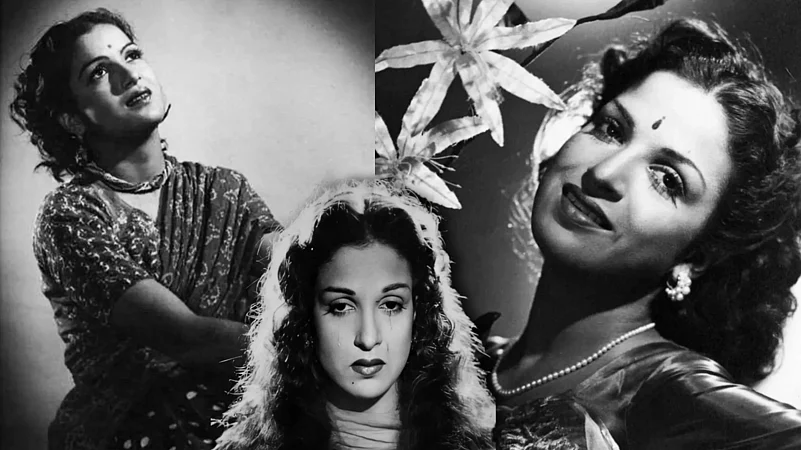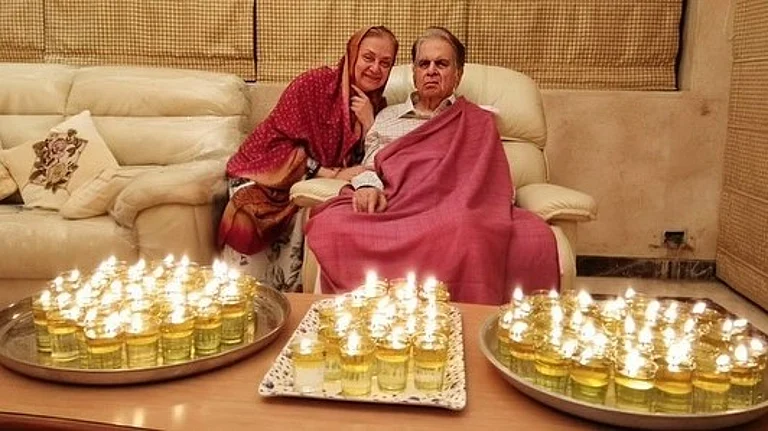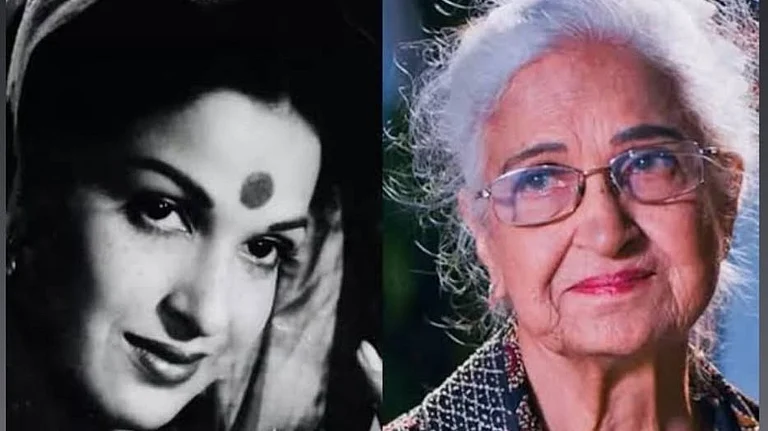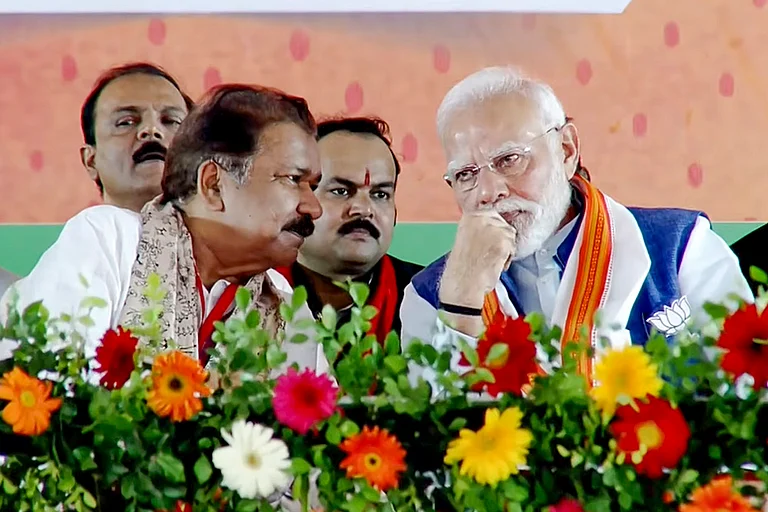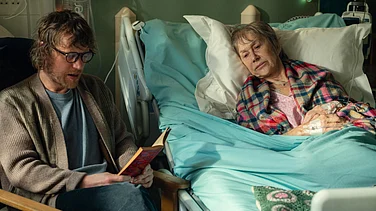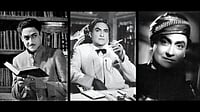Kamini Kaushal, who after the demise of Dilip Kumar in 2021, was revered as Indian cinema’s oldest living actress, has bid the world adieu. She would have turned 99 on February 24, 2026.
She debuted with Chetan Anand’s 1946 Neecha Nagar, the Hindi screen adaptation of Russian playwright Maxim Gorky’s 1902 stage drama, The Lower Depths. In the film, Kaushal plays the impoverished, but feisty Rupa, one of many afflicted when the landlord, who lives in a palatial estate up on the mountain, diverts a nullah, bringing the sewage into the village below, leading to an outbreak of diseases for which a hospital is opened.
“I don’t remember my first shot, but I do remember the dramatic death scene where my character, seriously ill and slowly slipping away, refuses to be taken to the hospital because the people running it are not ethical,” the veteran actress had recounted to me years ago. She pointed out lightly that dying wasn’t easy when you are balancing a table on your chest, the camera placed on it unblinkingly capturing your every move and expression.
Both her performance and the film was much appreciated, with Neecha Nagar sharing the Grand Prix du Festival International du Film (Best Film) Award at the first International Cannes Film Festival with 11 other feature films. To date, it remains the only Indian film to have won a Palme d’Or, while Kaushal was felicitated at the Montreal International Film Festival.
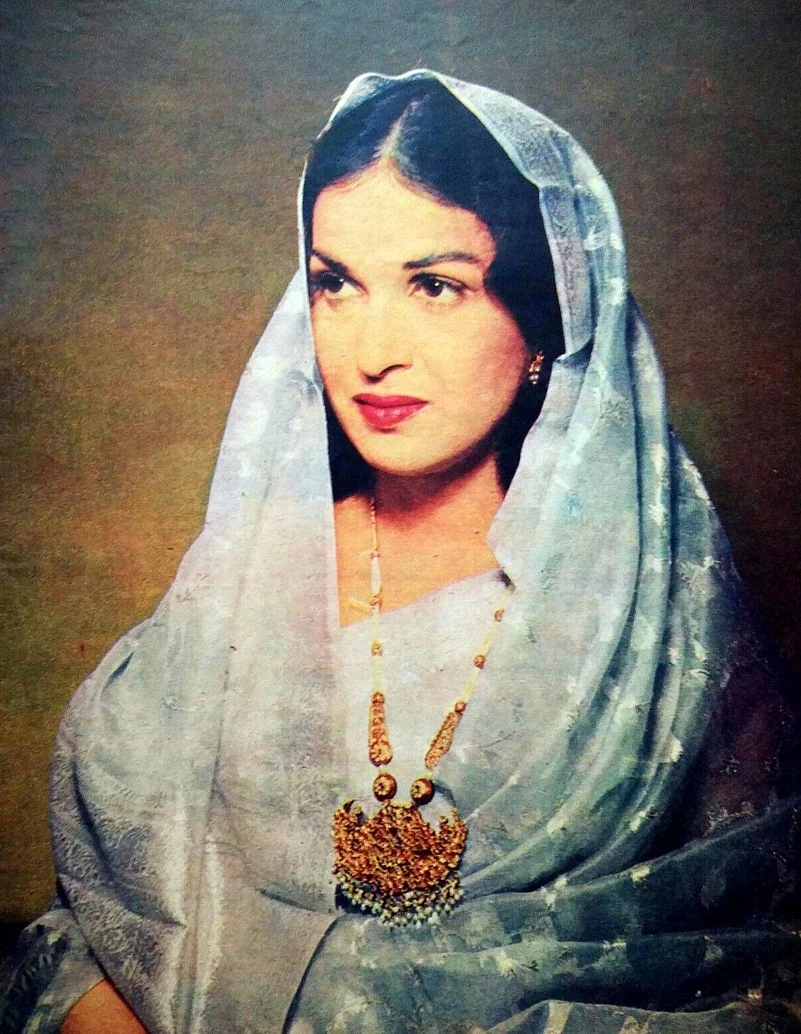
The daughter of pioneering botanist Shivram Kashyap—the founding member of the Indian Botanical Society and President of the Science Congress—Uma (her birth name) was the youngest of two brothers and three sisters. As a student of Lahore’s Kinnaird College, along with studying, swimming, skating and riding, she made time for plays on Akashwani too. Chetan Anand heard her on radio and landed in Lahore with a wish to launch her in his debut directorial. Even though she acted on stage, Uma had no wish to graduate to films and turned him down flatly.
But six months later, when she was in Bombay (now Mumbai), grappling with a personal tragedy, the filmmaker refused to be put off, and since he knew her brother well, Uma reluctantly gave in. To her surprise, the shoot at the sprawling Mohan Studio was fun. The unit was friendly, and since it was to be a very ‘real’ film, none of the actors—most of them amateurs like her—were expected to act. “We just had to be ourselves. We had done lots of rehearsals, so the shots came easy,” she reminisced.
The only problem was the make-up, whose overpowering smell gave her a headache.
And she lost her name.
Since Chetan Anand’s wife, who incidentally studied with Uma in the same college, was also called Uma and was acting in the film, her name was changed to avoid a mix-up. He rechristened Uma Kashyap as Kamini Kaushal, obliging her request that the name should start with ‘K’, like that of her daughters, Kumkum and Kavita. Uma had lost her sister in a tragic car accident and since Usha’s two daughters were very young, her family decided that she would marry her brother-in-law BS Sood so the girls wouldn’t grow up without a mother. She didn’t think twice.
After Neecha Nagar wrapped up, Uma, who was Kamini now, returned to Lahore and graduated in English literature. Her first film was critically acclaimed, but didn’t release in India. However, Filmistan’s Do Bhai was the second highest grosser of 1947 and the reluctant actress became a famous film star.

Marriage did not diminish her popularity and Kaushal was courted on screen by all the top actors of the time—from Raj Kapoor (Jail Yatra (1947) and his own film Aag (1948)) and Dev Anand (Ziddi (1948), Shair (1949) and Namoona (1949)),to Dilip Kumar (Shaheed (1948), Nadiya Ke Paar (1948), Shabnam (1949), and Aarzoo (1950)). With the latter, their on-screen romance spilled over into real life. Kumar is said to have even proposed to his first love, but the petite actress refused to dump her husband and daughters. Even though the break-up left them both shattered, she chose to stay with her husband, who was chief engineer with the Bombay Port Trust, at their Mazagaon home. The couple later had three sons, Rahul, Vidur and Shravan while Dilip Kumar, after his engagement with Madhubala broke, married Saira Banu.
With her films doing well, Kaushal turned producer in 1952, signing matinee idol Ashok Kumar for Poonam. Six years later, he again starred opposite her in another home production, Night Club (1958). In 1965, she played his invalid sister in Bheegi Raat, which had Meena Kumari as the heroine, torn between her love for Pradeep Kumar’s Ajay and her regard for Ashok Kumar’s Anand.
Kaushal herself was the tragic heroine of Sohrab Modi’s 1958 film Jailor, a tormented wife driven to suicide. The fiery Dhaniya in Trilok Jetley’s 1963 Godaan, based on a Munshi Premchand novel, was another tour de force, while the cold-blooded killer of the 1974 Anhonee sprang a surprise and Bimal Roy’s 1954 Biraj Bahu won her the Filmfare award for ‘Best Actress’.

Biraj, a sweetly submissive village girl, was the polar opposite of the glamorous, emancipated Kaushal. The first time she came to meet him, Roy asked her if she had read Sarat Chandra Chattopadhyay’s novel on which the film was based. When Kaushal nodded, he asked, “How many times?” In response to her “once”, he urged her to read it several times.
“She confided when I was speaking to her for my documentary on my father—Remembering Bimal Roy (2007)—that she read Biraj Bou 20 times and that helped her ‘live’ the character,” shares Roy’s son Joy. He adds that since the scenes were shot exactly during the time of day mentioned in the 1914 novel—be it a golden sunrise, the harsh light of midday or the twilight hour—Kaushal never felt the absence of colour in this exquisite black-and-white film. “The palate was rich in its blacks, whites and range of greys,” she rhapsodised to Joy.
Roy took home a Filmfare Black Lady for ‘Best Director’ while Biraj Bahu bagged the All-India Certificate of Merit for ‘Best Feature Film’ at the first National Film Awards. Her last film as a leading lady was Godaan. After that, she started refusing all offers, ready to focus on motherhood and quiet domesticity, till Manoj Kumar came to her with his 1965 film Shaheed.
Kaushal, who was in her late 30s was taken aback by his offer. “You want me to play your mother?” she asked incredulously. “I don’t want you to play just anyone’s mother. I want you to play Bhagat Singh’s mother,” he shot back.
She accepted the film and went on to play his mother in Upkar (1967), Purab Aur Paschim (1970), Roti Kapda Aur Makaan (1974), Shor (1972), Sanyasi (1975), Dus Numbri (1976) and Santosh (1989) too. She also played Saira Banu’s mother in Aadmi Aur Insaan (1969), Rajesh Khanna’s mother in Do Raaste (1969), Sharmila Tagore’s mother in Yakeen (1969) and Vinod Khanna’s mother in Humshakal (1992) among many others.
After a successful stint as mother, she went on to play the grandmother in Har Dil Jo Pyar Karega (2000), Laaga Chunari Mein Daag (2007), Chennai Express (2013) and Kabir Singh (2019). Kabir Singh bagged her the Screen Award for ‘Best Supporting Actress’. She was last seen in a cameo in Aamir Khan’s 2022 film, Laal Singh Chaddha (2022), as one of the co-passengers. Without speaking a single word, she still catches the eye. Besides films, Kaushal was also seen on television, in serials like Shanno Ki Shaadi (2005-2006), apart from the British serial, The Jewel in the Crown (1984), on BBC.
I met her when she was doing a puppet show for Doordarshan, Chand Sitare, and spent a happy hour watching her finger play with her handmade puppets. Like the homemade orange cake, whose taste will stay with me forever, the memory of this gently smiling, angelic woman shall continue to linger.







